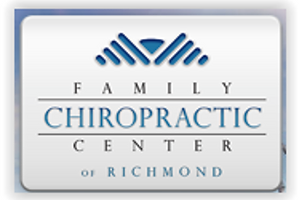Back Pain Prevention
- Dr. Eric Carlsen
- Apr 19, 2022
- 4 min read

With the number of sources of back pain, you might think it’s inevitable. It is not.
There are steps you can take to reduce your risk of developing back pain, mitigating the symptoms, or lessening the severity. Much of back pain prevention involves making healthy life choices and taking care of your body.
Exercise and Stretch Regularly
Strong, stable muscles are like armor for your spine and its structures. A strong core is one of the most protective things you can do for your back. Just keep in mind that “core” is more than your six-pack abs. You’ve got deeper muscles, plus the obliques on your side body and, of course, the muscles in the lower back. Strengthen them all to ward off back pain. The plank is a safe, effective core exercise that’s a great starting point for almost everyone.
Just as weak muscles can contribute to back pain, so can tight muscles. Tight hamstrings are a big contributor to lower back pain, and tight muscles, in general, can throw off your body mechanics and cause back muscles to spasm. Start with these five stretches to loosen up.
Lift Properly
Lifting heavy objects wrong is one of the most common ways to injure your back, and it’s one of the easiest to avoid. Before getting into proper lifting mechanics, our top tip is to know yourself and know your limits. It’s one thing to go for a deadlift personal record in the gym under the watchful eye of an experienced trainer. It’s quite another to try to get that couch into your truck by yourself.
Your leg muscles are some of the biggest and strongest muscles in your body, so employ them when you’re lifting something. Keep your spine straight and bend and extend with your legs. You don’t want to rely on the small stabilizer muscles around your spine, which are not designed to move heavy loads.
Just as you’re not supposed to bend your spine when you're lifting, you’re also not supposed to twist your spine. The spine is weaker in a twisting position, and you risk doing real damage to spine structures such as discs, spinal joints, and ligaments.
Improve Your Posture
Although poor posture and body mechanics may not wreck your back as quickly as improperly lifting something heavy, they’ll take their toll sooner or later. Be mindful of your posture to reduce or eliminate this sneaky cause of back pain.
Whether standing or sitting, you want your joints stacked—that is, your shoulders over your hips. This keeps your spine in its most natural alignment, where it can most easily and comfortably provide structure to the rest of the body. Deviation from that optimal position means the little stabilizer muscles in the back have to work overtime to keep you stable, something for which they were not designed, and that can lead to muscle spasms or worse.
When you’re sitting, the ideal position is with your feet flat on the floor and 90-degree bends in your hips and your knees. Keep your head centered over your neck. Moving it forward even a little bit multiplies the force on your cervical spine, which can lead to neck problems if you’re not careful.
Change Your Shoes
You may feel comfy in flip flops and look stunning in high heels, but these two forms of footwear are the toughest on your back. Flip flops don’t offer enough support, and wearing high heels changes your movement mechanics in ways that could hurt your back. Instead, opt for supportive, low-heeled shoes.
Clean Up Your Diet
If you eat a typical Western diet that’s high in saturated fat and processed foods, adding more fruits and veggies, switching out your meats for leaner cuts, and cutting out processed foods can pack a one-two punch in your bout against back pain.
First, switching to low-calorie foods from higher-calorie foods makes it much easier to control your weight, and excess weight, as Dr. Knight already mentioned, is one of the top modifiable causes of back pain. A 180 lb. person would have to walk about an hour to burn off a 300-calorie donut…or you could just not eat the donut. Ever heard the expression, “You can’t outrun your fork?” That’s what that means.
The other way eating better can help with your back pain is that high fat, high sugar foods can cause inflammation which, as you now know, can contribute to back pain in a number of ways, from rheumatoid arthritis flares to intervertebral disc trouble. Changing your diet to more closely mimic the classic Mediterranean Diet will get you most of the way to where you want to be.
Quit Smoking
Smoking is bad news for your back because it impairs the delivery of nutrients to spinal structures. This can put you at risk for new back pain, make existing back pain worse, and sabotage your recovery from spine surgery. We understand that quitting smoking is easier said than done, but the US Department of Health and Human Services has resources to help at smokefree.gov.
Written by Reginald Q. Knight, MD, MHA and Shelby Deering; Reviewed by Reginald Q. Knight, MD, MHA




Comments